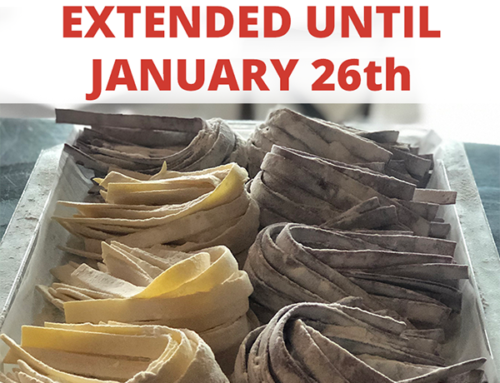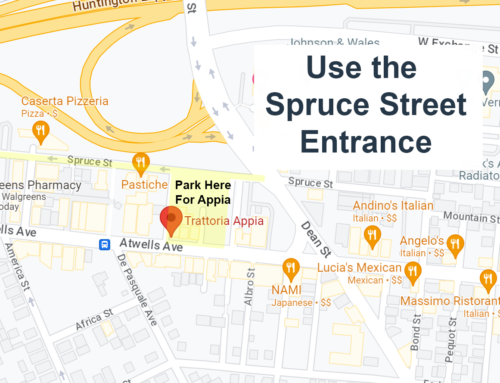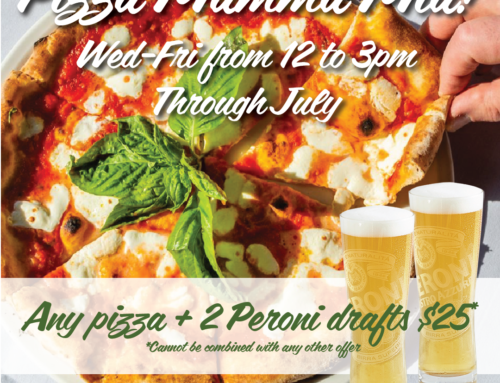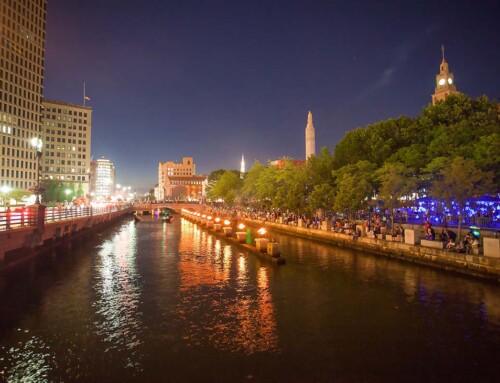In what is my initial monthly installment of a Neapolitan’s wine column, it’s only fitting that I give all the readers of the RI Echo a brief background about myself.
To begin, what is Miseria ѐ Nobiltà Miseria & Nobiltà? Well, we need to return to my early years in Napoli. I grew up in the city, and Miseria & Nobiltà was a famous Totò movie (Totò might be the greatest Neapolitan comedian of all time) and we hold the same for Brancaia Winery in Tuscany. We also have the distinction in selling specific wines from Italy and Argentina by the glass that cannot be purchased by the glass anywhere in the world.
This out of the box way of thinking won me an all inclusive paid trip by the Italian Trade Commission this year as part of the US delegation to Vinitaly. Vinitaly is the largest wine expo for Italian wines held yearly in Verona. Through this incredible opportunity, I also had the pleasure to see what the Italians are doing with the Trento DOC program. Trento DOC is a program the Italian wine makers are presenting to the world in an effort to teach that we too make champagne-like wines. We call them Metodo Classico.
Upon my return, Trattoria Zooma is the first restaurant on Federal Hill to remove all champagnes and take part in this patriotic initiative. On a related subject, these wines like Ferrari and Rotari (Vintage) are products that are quite on par with what the French are making. I’m sure we will tackle that in a future column.
So what do I intend to do via this column? I want the reader to learn about wines. Wines you may have never heard of before. I want to educate you outside of Chardonnay, Pinot Grigio, Pinot Noir, Merlot and the dreaded Chianti. I want you to understand if you go to your favorite restaurant and you go often, you can mandate what wine you want drink.
I have a peeve in most restaurants in Rhode Island. I call it the “J Lohr affect.” No knock on Mr. J Lohr, but if you walk in to 25 restaurants and 25 restaurants have the same wines on the list, you aren’t drinking anything new. Instead of trying a great Aglianico from Napoli, or a Cannonau from Sardinia, you are stuck with the same old California Cabernet. That, my friends, is the “J Lohr Affect.”
So the first wine I wanted to introduce to my readers is Mastroberdino’s Falanghina. OHHHH, how I love that wine. The Mastroberardino family is dedicated to making wine from ancient varieties that are indigenous to the region. Falanghina is the primary grape for the Sannio appellation and is named after falange, a Latin term for supporting stakes.
Many believe this grape to have been the basis of the legendary Falernian wine, the most prized wine of ancient Rome, due to its unique profile and fragrance. As far as some of the tasting notes on this wine, they are pale lemon-green in color, aromas of ripe pineapples and citrus fruits are complemented by undertones of white flowers. On the palate, zesty acidity and persistent notes of honeysuckle and toasted almond make for a definite crowd-pleaser. We pair this with the following:
Antipasti ~ Calamari Fritti
Primo ~ Black Tagliatelle with Shrimp
Secondi ~ Pesce Spade
Glass price $12, bottle $48
That, my friends, concludes this month’s column. See you in August and remember always drink with Miseria & Nobiltà.
In what is my initial monthly installment of a Neapolitan’s wine column, it’s only fitting that I give all the readers of the RI Echo a brief background about myself.
To begin, what is Miseria & Nobiltà? Well, we need to return to my early years in Napoli. I grew up in the city, and Miseria & Nobiltà was a famous Totò movie (Totò might be the greatest Neapolitan comedian of all time) and we hold the same for Brancaia Winery in Tuscany. We also have the distinction in selling specific wines from Italy and Argentina by the glass that cannot be purchased by the glass anywhere in the world.
This out of the box way of thinking won me an all inclusive paid trip by the Italian Trade Commission this year as part of the US delegation to Vinitaly. Vinitaly is the largest wine expo for Italian wines held yearly in Verona. Through this incredible opportunity, I also had the pleasure to see what the Italians are doing with the Trento DOC program. Trento DOC is a program the Italian wine makers are presenting to the world in an effort to teach that we too make champagne-like wines. We call them Metodo Classico.
Upon my return, Trattoria Zooma is the first restaurant on Federal Hill to remove all champagnes and take part in this patriotic initiative. On a related subject, these wines like Ferrari and Rotari (Vintage) are products that are quite on par with what the French are making. I’m sure we will tackle that in a future column.
So what do I intend to do via this column? I want the reader to learn about wines. Wines you may have never heard of before. I want to educate you outside of Chardonnay, Pinot Grigio, Pinot Noir, Merlot and the dreaded Chianti. I want you to understand if you go to your favorite restaurant and you go often, you can mandate what wine you want drink.
I have a peeve in most restaurants in Rhode Island. I call it the “J Lohr affect.” No knock on Mr. J Lohr, but if you walk in to 25 restaurants and 25 restaurants have the same wines on the list, you aren’t drinking anything new. Instead of trying a great Aglianico from Napoli, or a Cannonau from Sardinia, you are stuck with the same old California Cabernet. That, my friends, is the “J Lohr Affect.”
So the first wine I wanted to introduce to my readers is Mastroberdino’s Falanghina. OHHHH, how I love that wine. The Mastroberardino family is dedicated to making wine from ancient varieties that are indigenous to the region. Falanghina is the primary grape for the Sannio appellation and is named after falange, a Latin term for supporting stakes.
Many believe this grape to have been the basis of the legendary Falernian wine, the most prized wine of ancient Rome, due to its unique profile and fragrance. As far as some of the tasting notes on this wine, they are pale lemon-green in color, aromas of ripe pineapples and citrus fruits are complemented by undertones of white flowers. On the palate, zesty acidity and persistent notes of honeysuckle and toasted almond make for a definite crowd-pleaser. We pair this with the following:
Antipasti ~ Calamari Fritti
Primo ~ Black Tagliatelle with Shrimp
Secondi ~ Pesce Spade
Glass price $12, bottle $48
That, my friends, concludes this month’s column. See you in August and remember always drink with Miseria & Nobiltà.





